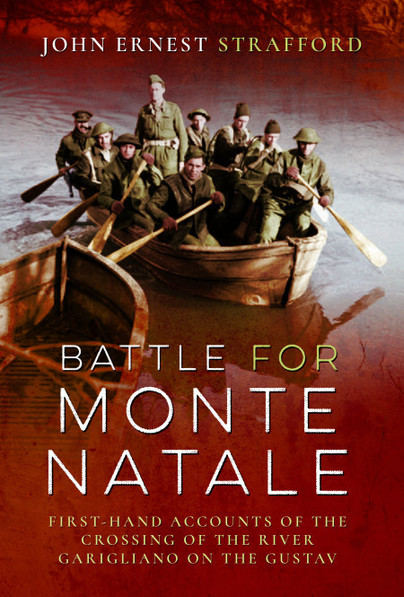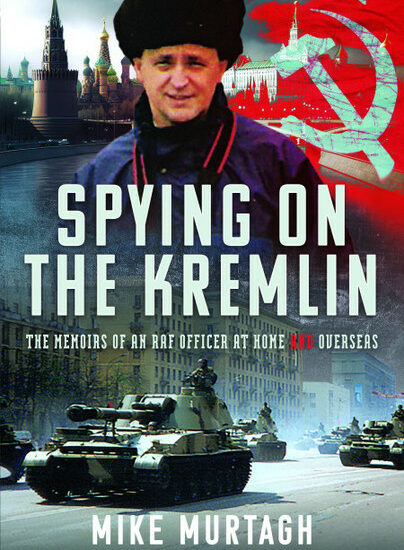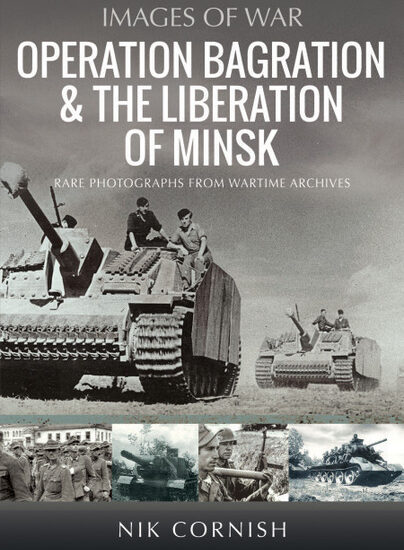Author Guest Post: John Ernest Strafford
Battle for Monte Natale
First-Hand Accounts of the Crossing of the River Garigliano on the Gustav Line
Author: John Ernest Strafford
Highlights
- Battle for Monte Natale brings together contemporary accounts showing war, not only at the strategic level involving Corps, Division, Brigade, and Battalion , but also the individual level, inspiring stories of heroism and sacrifice. No book about World War II shows a battle in such detail.
- Minute by minute, hour by hour, day by day, by words, pictures and maps, it shows what happened in the three weeks from 17th January to 7th February 1944.
- Ernest Strafford (father of John Strafford) served with 1 York & Lancs. On 20 Jan 44 a witness reported that he saw Pte. Ernest Strafford “wounded in the head when a mortar bomb burst among us during our attack. I believe his wounds were serious”.
- On 4 Feb 44 the body of Ernest Strafford was “recovered, identified & buried by British Troops”. What happened to Ernest Strafford between these two dates is assessed in this book.
Battle for Monte Natale is part of the first Battle for Monte Cassino – the bloodiest battle of the Italian Campaign. By extensive use of War Diaries, missing person reports, awards for valour, and personal accounts including those of German soldiers, this is the story of those individuals who fought and died in the Battle for Monte Natale. All the action takes place in an area of just nine square kilometres. It is a unique glimpse of an important battle from both sides of the conflict.
The casualties of 1 York & Lancs. during the attack on Monte Natale were: Killed 49, Wounded 144, Missing 64. The attacking Companies were about 400 men.
Here is a typical page from the book:
1 KOYLI War Diary
19 Jan 44 – 1000
Our initial task was to clear the village of Tufo, standing high on a ridge above the assembly area and then to push on to Point 201 to the North of Tufo. A large barrage of all the Corps Artillery plus a Medium Regiment had been laid on to support the attack. Unfortunately, this barrage had been decided upon before the infantry plan had been fixed and it did not in fact quite fit the ground as seen from the ground and not from a map. The attack as it was put in had the barrage on the left flank to start with, gradually moving away as the attack progressed. Not only this but the attack had to go in at 1000 hours to fit the barrage which did not in fact give the Battalion enough time for preparation, recce and forming up. Whilst directing the barrage Captain K. Ashdown, 92 Field Regiment Royal Artillery, who was the Forward Observation Officer was hit by one of his own shells and subsequently died of his wounds.
15 Infantry Brigade War Diary
19 Jan 44 – 1000
Both Battalions, 1 KOYLI right and 1 Green Howards left, then advanced behind the barrage onto their respective objectives. 1 KOYLI secured Point 201 without much difficulty capturing six prisoners of war, many enemies being seen to retire towards the North. Two companies were immediately put in to hold the 201 feature, the remainder of the Battalion being concentrated in and around Tufo itself. Simultaneously 1 Green Howards advance moved well towards Minturno.
Private Wilhelm Prinz, 274 Grenadier Regiment: “My worst days in World War II. Have there been failures?”
“Height 199 at Tufo. (Point 201).
My Company was waiting for me. My first question to the Company Commander was “Have there been casualties?”. Despite the heavy artillery bombardment, we had no wounded and no dead. How much longer should we be lucky? I informed the Platoon Commander about our combat mission – for better security I did not tell everyone. A messenger from Lieutenant Gieseler had informed me, how to get us into the right position. After 200 metres we were to take the road that goes to Minturno, veering to the left and drop into a deep valley. South East was our direction of travel. After crossing the valley, as Lt, Gieseler had described it, we would reach the North slope of Point 201.
We went into combat with the units at almost full target strength at the beginning of this First Cassino battle. I guess each unit had about 130-135 men, divided into 3 Grenadier Platoons.
Powerful explosions tore me away from my thoughts. The first ones wounded, shouted for the medical orderly. I did not want to take my men into this danger zone. I soon discovered that there were danger zones everywhere. There were no oases of relative safety.”

About the Author
John Strafford was born in Sheffield, Yorkshire and now lives in Buckinghamshire. He went to the Duke of York’s Royal Military School from 1954 to 1960. The school was founded in 1803 for the sons of soldiers. Married with three children and two grandchildren he is now a retired Chartered Accountant.
One evening in November 2011 he was walking through the Field of Remembrance at Westminster Abbey when at the York & Lancs. section the first wooden cross he saw had his father’s name on it. He broke down in tears. He never knew his father, but the site of the cross made him determined to find out what happened to him.
He has spent over ten years researching the Battle for Monte Natale and has been to the battlefield several times. In 2022 he took part in an interview with Italian Television shown at the Roman Amphitheatre in Minturno, about the war in Italy.
Other published works include “Our Fight for Democracy” – a history of democracy in the United Kingdom

Order your copy here.

